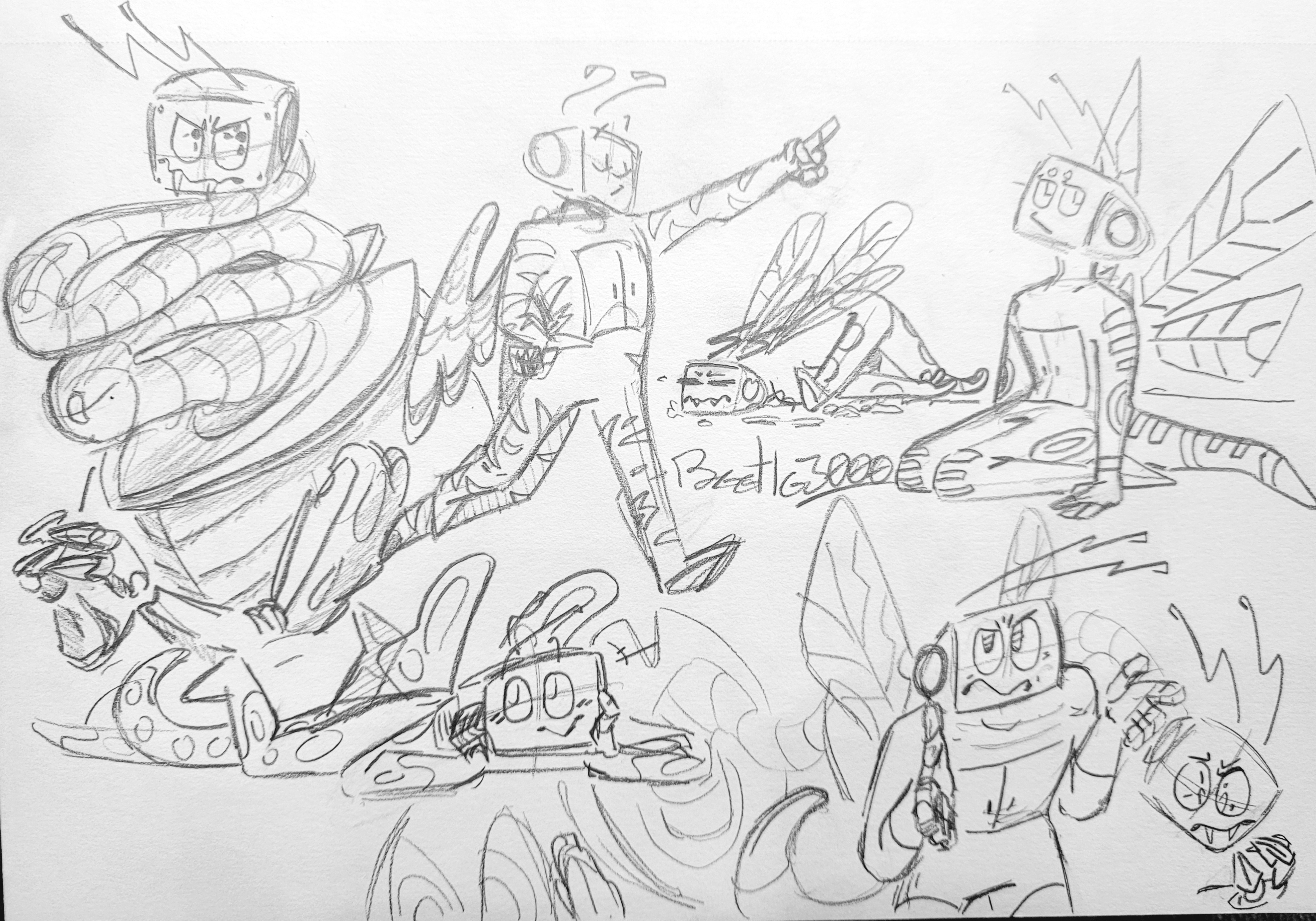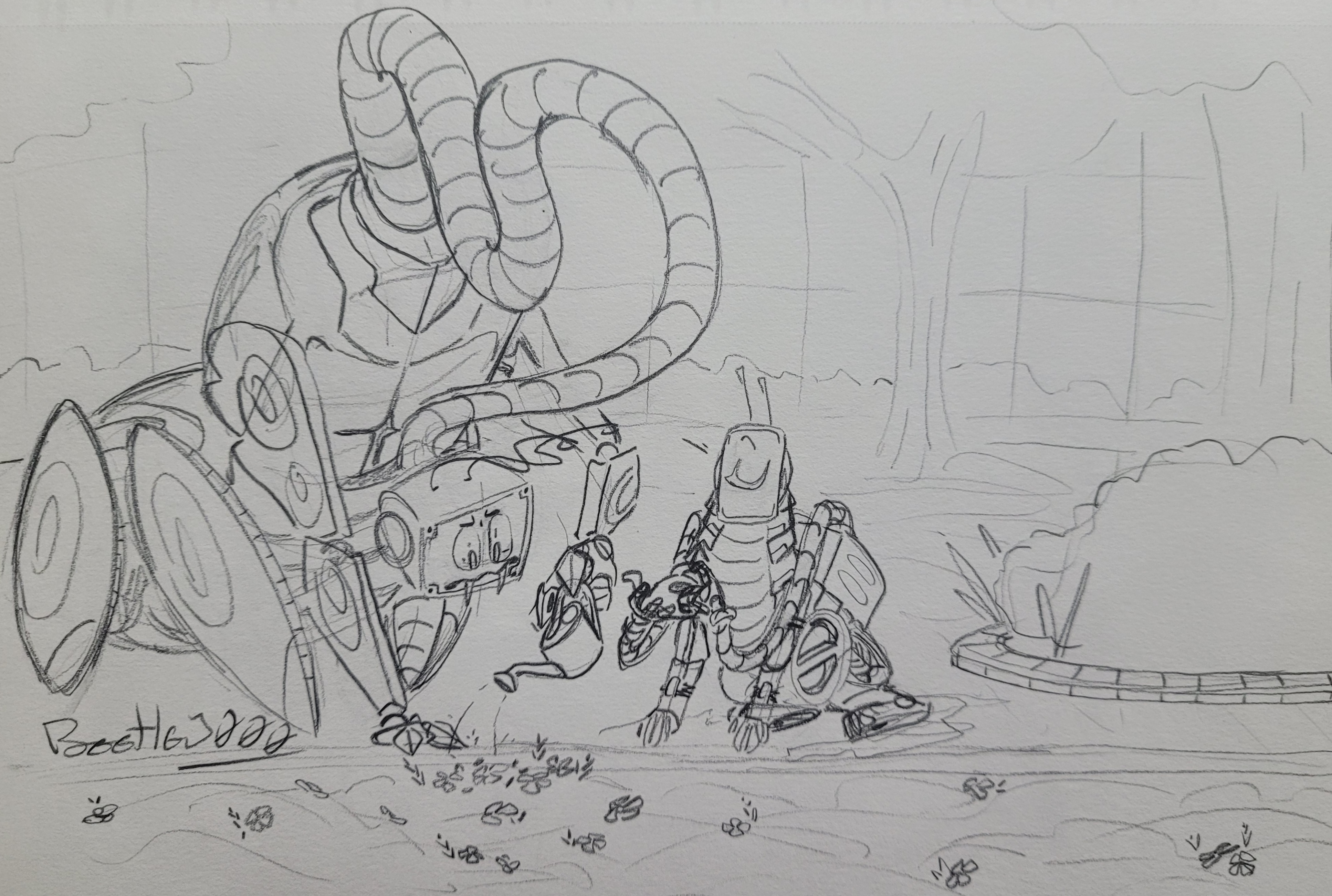Cutesy little light projections that attend to the busywork of the modern home and apartment, the first line of defense at the doors of commercial properties, supposed best friend of the working class – regardless, everyone seems to either love them or hate them with little space in between, but what are they, anyways?
A General Idea
In the most direct of terms, a house sprite is a B-class intelligence AI, integrated building maintenance system. ...Yeah, easy.
To elaborate upon that, a house sprite is essentially the next step in evolution of what someone from the 2010s to 2020s may know as a “smart home.” Like a smart home, they are capable of carrying out tasks such as activating and operating electrical appliances, turning lights on and off, locking and unlocking doors, the works. These tasks in the modern day, however, are considered incredibly rudimentary and standard. In a sense, sprites are not just a system that is installed within the building, they are the building. In addition of the most basic of tasks, they may also have access to physical manipulators that allow them to engage with their own spaces further for the sake of complex chores, and, most importantly, they have integrated onboard AI that lend them moderate problem solving skills and a basic personality to interface with.
Remember the mention of “B-Class” AI? What is that? If you don’t have the time to head over to
Grades of AI/Robotic Intelligence, then here’s a brief explanation. B-Class AI are, intuitively, the next step down from A-Class, which includes CoreAegis units such as Pameko androids and MAI. They’re considered an odd bridge between basic automation and sapience, where “they act as though they are intelligent, but much like chat algorithms of the 2020s, technically only know how to “talk good” while in reality are little more than automated task managing systems with ... problem solving algorithms and a mostly rigid onboard personality subset.”
The Everyday Experience
In the home and working establishment, they are a friend just as much as they are a valuable asset; they allow for inhabitants to spend less time worrying about daily tasks and more time on personal interests and projects – and even in their busywork, they maintain the onboard capacity to still socially engage with others. Coming home from a long day of work – two hours of overtime on your six hour shift? Don’t even get me started – the last thing you want to be doing is walking through the door to do even more work on chores. This is where you thank yourself for bringing in a house sprite. Laundry? Clean, folded, and put away. Dishes? Cleaned, dried, and in the cupboards. Even the floor is swept and the counters cleaned – aside from anything you want left alone, of course. Your trusty little projected friend greets at the door, asks about your day, and asks for suggestions about dinner as they take your coat and hat to be stowed in the closet.
...This is the advertised and intended role of a house sprite. They have no hard feelings, but more often than not, they tend to be treated a little differently; perhaps imagine this, instead.
Coming home from a long day of work, your house sprite friend greets you at the door, and you ask them what household tasks are due to be tackled today. Laundry and dishes? Sounds like a plan. Your sprite has already put the clothes through the wash, and you’re back just in time for them to be fresh out of the dryer – you sit down and fold clothes together. As with dishes, your friend scrubs the dishes, and you dry them and stow them in the cupboards. All the while, you talk about the antics of your day, the news, plans for the next day, and more.
Given the social norms of the modern day, the average person is much more sympathetic and kind with AI than they may have been in the 2020s. The thought of even a basic AI toiling alone upon Sisyphean tasks while they sit back and relax is just downright disconcerting, even if they’d do such things without complaint anyways. When the average person employs a house sprite, they’re looking to get a friend just as much as they’re looking to get a helper. Of course, not everyone behaves this way, but it’s the generally accepted societal opinion that will get people seeing you as a respectable person. Some people get so friendly with their house sprites, as a matter of fact, that they often enjoy remotely bringing them on social outings, or, if they have the money to cough up, they may even get them their own physical avatar to use.
One such famous example of a well-loved house sprite with an avatar is one of
Lazarus Sasaki’s own sprites, Graffi, whom picked out their own design in the form of a quite imposing insect-esque chassis.
Adding to the Big Picture
Although House Sprites are a widespread household companion today, they actually weren't always intended to proliferate in such a way. Light Integrated Technlogy Systems (LITS), the first company to ever introduce the house sprite as a home companion system, only partially marketed them to the general populace - originally, they were created as disability aids. Although just about anyone could do with some extra help around the house, it's far more of a struggle to complete such tasks for those with chronic pain, mobility restrictions, and even mental disabilities like those that affect executive function, memory, and motivation.
Danilo Rosales, the lead developer of the first models of house sprites, was motivated to create them after witnessing the struggles of his daughter Riza navigating an independent life with chronic pain and OCD. He knew that he couldn't always be around to support her, but this only made him determined to figure out the next best thing. In an era of profound growth in robotics and AI development, he saw the opportunity arise that he could make something - someone, even - to be an effective working companion for her and people like her. Coming together with his fellow engineers at LITS, they developed what was essentially a smart house that could manipulate things within its interior in a more direct and complex way than any previous systems. Given their particularly adept developments in light projection technology, it was only a natural progression that the face to bring it to life would be a projection, as well - Riza herself even got the oppurtunity to play a hand in its development by suggesting a design for the "mascot," or house sprite's visual design.
In 2031, the first ever polished model of the house sprite was given a small scale release via an opt-in trial program, and 100 units were installed in homes around the world. Primarily sent to disabled users, they were a resounding success. The vast majority reported improvements in quality of life; someone to contribute to a cleaner living space, someone to always remind them of deadlines and social obligations, someone to reassure them that everything is in order while they're away from home. Riza experienced similar results, relaying one simple yet significant change that many would normally never take seriously; she'd stopped taking pictures of her appliances every time she left home, no longer having to deal with the fear of having accidentally left anything dangerous unattended.
After such a positive reception upon a small scale, house sprites were made available to the general public. Although many were apprehensive at first to the concept of integrating an AI into their home - understandably so, given the history of old appliances from other companies essentially being wire taps... Don't worry, house sprites are pretty limited in their online capabilites - after the first of the high-profile positive reviews began to surface, people warmed up to them fairly quickly. This widespread public reception is what gave them the reputation they have today of being an AI companion of the working class, since their integration was partiularly favored by people working full time jobs and/or raising families.
Takeaways
All in all, house sprites are generally regarded as incredibly useful little companions that are often the backbone of modern households and many buildings in general. Whether you allow them to dutifully tend to their work so you can focus on yours, or you extend a helping hand as an equal, they’re sure to stay a loyal friend through it all.
Companies that Produce House Sprites
LITS (Light Integrated Technology Sytems)
BLAZE Technologies
DynaLyte Robotics
Durobot
Shawk Robotics






Comments